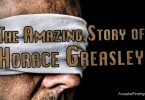If you decide to write and publish your family history, you must decide if you just want those who share your common ancestors to read it, or if you want to sell it to a wider audience. A family history for a wider audience has to be more than just names, dates, and places. Here's how to inject some fascinating readability into your family history that will make it more appealing to a wide audience.
While most written and published family histories are meant for just members of that family to read, or those that share a common ancestor if it is a particularly long family history, there have been some that have gone on the market as big sellers to a wider, general audience. What makes the difference between a family history that gets a few sales from people related to the ancestors mentioned in the book and one that a large, public audience wants to read? The main difference is excitement. Just about any family history can become a good seller on the general book market if it has some excitement in it.
To make a family history more exciting, you need to dig deeper than just names, dates, and places. You need stories. Personal details are what lift a family history from a mere record of a long-ago person's descendancy to something that lots of people unrelated to that person will want to read. To get the stories, you should be looking into old newspaper records for information on the things your ancestors did and experienced. You should also be looking at old land records, wills, tax records, and military records. Each of these will tell a story about something your ancestor did when they did it, who else was involved, and what the outcome of the event was for the involved parties.
Take these details and tell them in story form, not just as a list of facts. Add adjectives, and create long sentences full of detail using the information you find. Look at the year the event took place and see what was going on in your ancestor's local area, state, and nation at the time, so you can put the event in its proper historical context. This will make the story even more interesting and pertinent to a wider audience. The historical setting for the event tells the readers what world the participants lived in and how wider events may have influenced or shaped the story you're telling.
Use as many of these stories as you can discover in your family history. The more stories you can tell within the family history, the more interesting it will be to general readers who are not related. Tie the stories together into one long narrative, and you've got a pretty exciting family history book that lots of people will read, rather than a dry accounting of your ancestry.
An excellent book that takes a family history and makes it exciting enough to appeal to a large audience is “Mayflower Bastard: A Stranger Among the Pilgrims,” by David Lindsey. Lindsay takes the history of his own family, which he traces directly back to Mayflower passenger Richard Moore, and turns it into a tale of intrigue, adultery, and adventure, all using well-researched historical facts on the Moore family. If you are looking for inspiration for how to turn your own family history into a book that you can publish for a broad audience, read this one and see how it's done.




